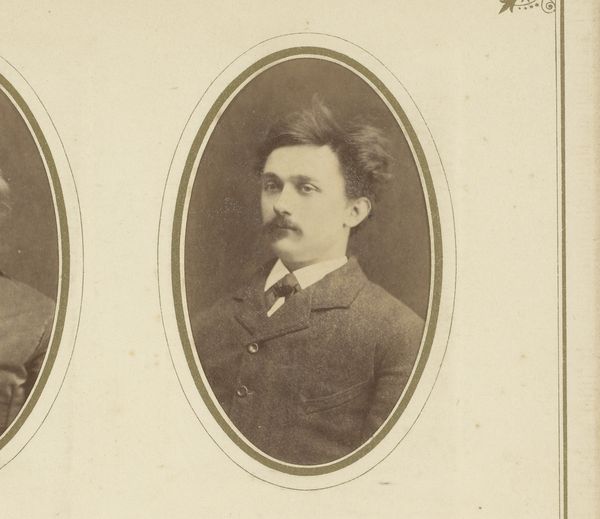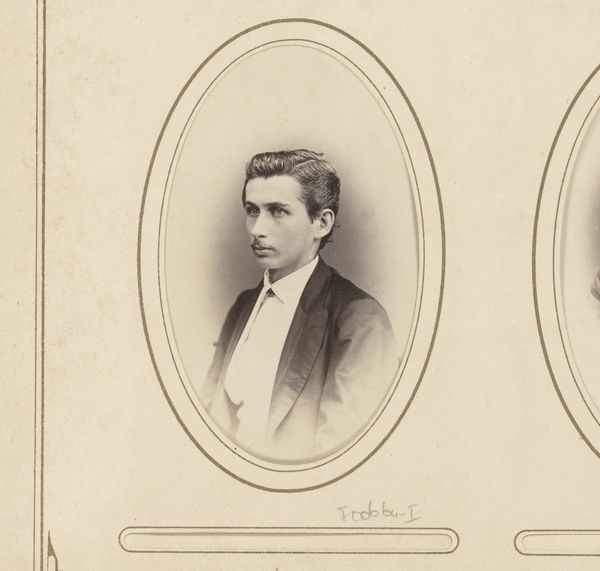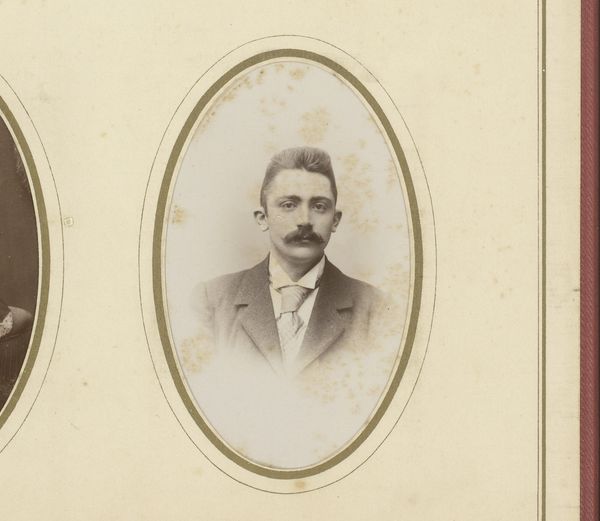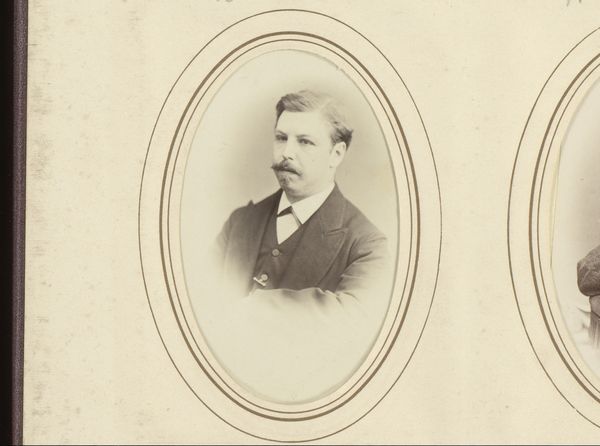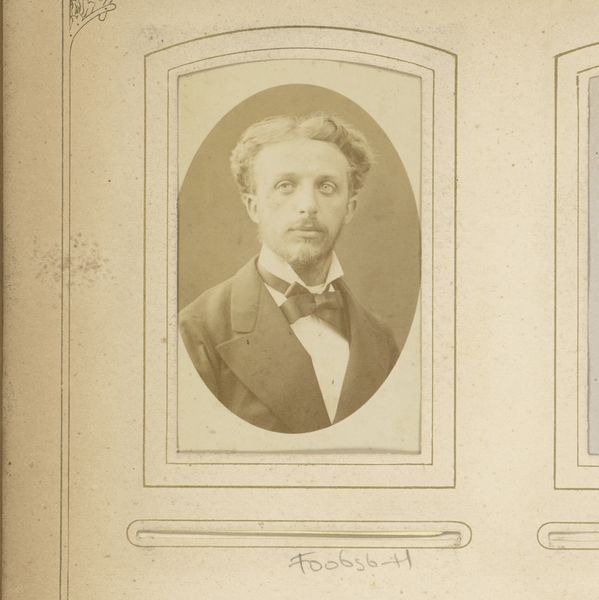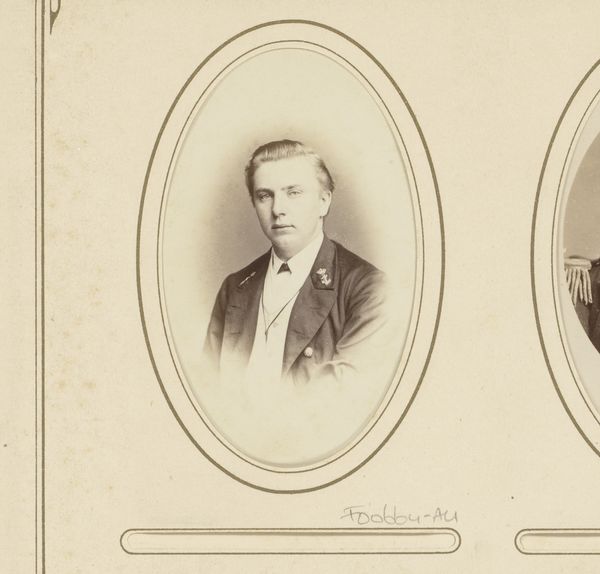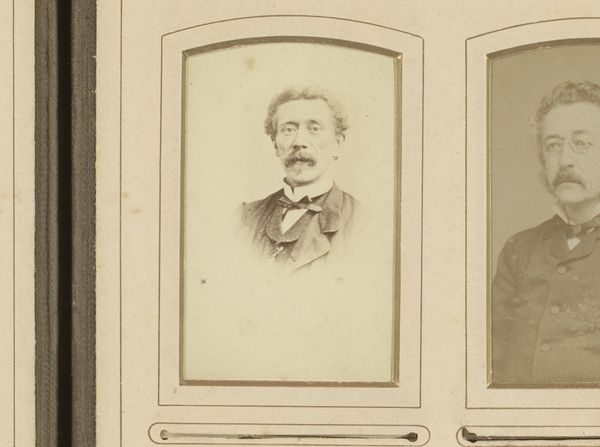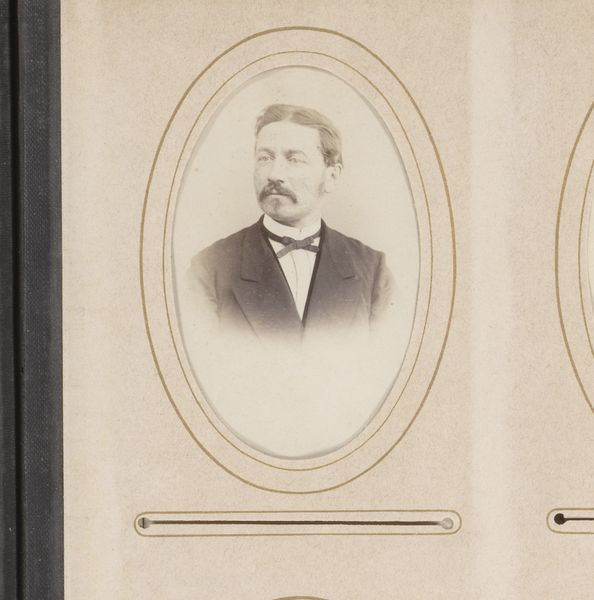
photography
#
portrait
#
yellowing background
#
photography
#
historical photography
#
19th century
Dimensions: height 85 mm, width 51 mm
Copyright: Rijks Museum: Open Domain
Editor: So, here we have Wilhelm Höffert's "Portret van een man met snor, aangeduid als Bertram Schütze," a photograph from 1889. It has a very formal and slightly faded quality. I wonder, what is it about these 19th-century photographic portraits that still resonates today? Curator: I think what draws us in is their careful staging. Photography was still relatively new, and this wasn't a candid shot. The subject, likely from the upper middle class given his attire, consciously chose how to be represented. Think about the message he and the photographer were crafting. Editor: A message, yes, of social standing. I wonder how accessible portrait photography would have been back then? Curator: Not very. Studios like Höffert's catered to a specific clientele. Looking at this portrait within that context helps us understand it as a carefully constructed performance of identity. Consider the man's direct gaze, the precisely groomed moustache, and formal attire. Every element contributes to a deliberate image. Editor: So the power of the image resided in controlling how one was seen, defining the visual legacy, essentially? It wasn’t about capturing a fleeting moment, but solidifying a social position. Curator: Exactly! It's fascinating how studios like Höffert’s played a part in shaping social identities and the visual language of the time. And also shaped how subsequent generations would be viewed by their descendants. Editor: It shifts my perspective entirely! I tend to think of photos as snapshots, but this shows how actively photography has constructed narratives throughout its history. Curator: Precisely! Considering the social and cultural influences gives a richer appreciation of such works. Editor: This makes me see the portrait – and early photography in general – as a very active agent in constructing social narratives. Curator: Precisely! And that understanding really shifts how we view these images, even today.
Comments
No comments
Be the first to comment and join the conversation on the ultimate creative platform.

